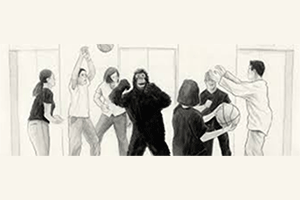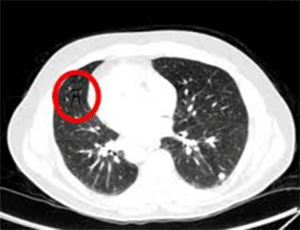
In our bustling world, where multitasking has become a way of life, the significance of body awareness often takes a back seat. Those of you who participate in my Strong Bones classes know how often we weave body awareness into the performance of each exercise. Cultivating this sense can not only improve how we perform each exercise, but also greatly enhance our daily lives and overall well-being.
Meanwhile, it is not unusual to fail to notice something because our attention is engaged elsewhere. Our focus can actually limit our awareness, sometimes with surprising consequences.
The Phenomenon of Inattentional Blindness
Inattentional blindness is a psychological phenomenon where we fail to perceive an unexpected object, action, or activity in plain sight because our attention is focused elsewhere. It happens when we are concentrating on a specific task or object and become ‘blind’ to other details in our environment, even if they are right in front of us. We are routinely tricked by the sleight of hand of magicians. There are many examples of this in everyday life – even careful, focused drivers can miss the deer approaching the side of the road.
The Invisible Gorilla Experiment: A Classic Example
One of the most famous demonstrations of inattentional blindness is the “Invisible Gorilla” experiment. There are many versions of this experiment, but perhaps the most well-known was done in 1999 by psychologists Christopher Chabris and Daniel Simons (1).
In it, study participants are asked to watch a short video in which two teams, one in black shirts and one in white shirts, are passing a basketball. Their task is to silently count how many times the players in white shirts pass the ball. Halfway through the video, a person in a gorilla suit walks through the game, pauses briefly, pounds her chest, then walks off screen. Afterwards, the study participants are asked if they noticed anything unusual.
Amazingly, more than half said “No”. Perhaps even more interesting is that even after the participants are told about the gorilla, they’re certain they couldn’t have missed it. When shown the video, some even accused the researchers of having switched the tape when they weren’t looking! A link to the video is below (2).

This experiment has been repeated many times, under different conditions, with diverse subjects in many countries, and the results are always the same – about 50% fail to see the gorilla. It seems we humans experience much less of our visual world than we think we do.
Inattentional Blindness in Medicine
This quirk of our perception can have serious implications. One example can be found in a 2013 study, where twenty-four experienced and credentialed radiologists were asked to perform a familiar lung-nodule detection task on several CT scans (3). Each CT scan had an average of ten nodules and the radiologists were asked to click on them. The last of the five CT scans had something unexpected turn up on the lung: an image of a gorilla that was forty-eight times the size of the typically small nodule.
Twenty of the twenty-four radiologists (83%) failed to see the gorilla, despite scrolling past it more than four times on average. You can see him in the image below at the top of the right lung.


Trust But Verify
It is certainly disturbing that even seasoned professionals working in their domain of expertise can be vulnerable to inattentional blindness. There are many, many examples of these sorts of “misses” that occur across many health-related disciplines. Even the best in her or his field can make an error, so perhaps the takeaway is to always ask for a second, perhaps even a third opinion. (At the end of the day, this might turn out to be a perfect application of the benefits of artificial intelligence to assist in detection of abnormalities.)
Beyond the Gorilla: Cultivating Awareness
How can we use these gorilla experiments as lessons to improve our lives? In a world filled with distractions and over-stimulation, we can lose touch with our self-awareness and surroundings. While it’s nearly impossible to fully eliminate inattentional blindness, there are ways to help mitigate its effects. Here are a few suggestions:
- Take regular breaks from tasks to help refresh your mind and attention. This is particularly important when you’re engaged in repetitive or intense work.
- Take long breaks from your cell phone.
- Limit how much you listen to or watch the news of the day.
- Take a moment to pause and shift your focus when you’re moving between tasks.
- Cultivate mindfulness practices such as meditation or slow, intentional breathing.
- Consider trying an Awareness Through Movement lesson in the Feldenkrais Method. (There’s a free example on my website.)
- There are many examples of mindfulness practices that help nurture body awareness but simply taking a few moments to pause and reflect can be transformative.
- Simons DJ, Chabris CF. Gorillas in Our Midst: Sustained Inattentional Blindness for Dynamic Events. Perception. 1999;28(9):1059-1074.
- https://www.youtube.com/watch?v=vJG698U2Mvo
- Drew T, et al. The Invisible Gorilla Strikes Again: Sustained Inattentional Blindness in Expert Observers. Psychological Science 2013;24(9):1848-1853.

